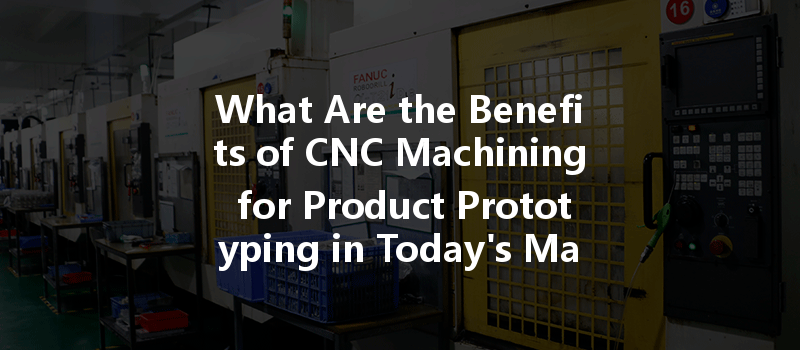Did you know that more than 80% of product developers agree that prototyping is a crucial stage in the product design process? The world of manufacturing is rapidly evolving, and in this dynamic landscape, CNC machining has emerged as one of the leading technologies for creating high-quality prototypes.
When it comes to transforming an idea into a tangible product, precision and speed are essential, and that’s where CNC (Computer Numerical Control) machining shines. It has revolutionized the way products are prototyped, allowing companies to swiftly test concepts, refine designs, and ultimately reduce time-to-market.
In this blog, we will delve deep into the multifaceted benefits of CNC machining for product prototyping, detailing its significant advantages, applications, and common challenges. We will explore solutions to these challenges, showcase real-world examples, and provide a comprehensive guide for businesses looking to leverage CNC machining technology for their prototyping needs.
CNC machining refers to a manufacturing process where pre-programmed computer software dictates the movement of factory tools and machinery. This technology utilizes various precision machines, including lathes, mills, routers, and grinders, to shape and cut materials into specific forms.
The advantages of CNC machining lie in its ability to create intricate designs with repeatable accuracy, leading to high-quality products that meet consistent standards. This technology is widely applied across various industries including aerospace, automotive, medical, consumer goods, and electronics.
2.1 Enhanced Precision and Accuracy
One of the standout features of CNC machining is its exceptional precision. Unlike traditional manual machining, where human error can lead to inconsistencies, CNC machines operate based on programmed commands, allowing for exact tolerances—down to micrometers. This is crucial in product prototyping, where minute dimensional variations can make a significant difference in the functionality and performance of the final product.
Solution: Invest in high-quality CNC equipment and ensure regular calibration and maintenance to maintain precision levels throughout the prototyping process.
2.2 Faster Production Times
In today’s fast-paced manufacturing environment, time is of the essence. CNC machining dramatically reduces the time needed to manufacture prototypes. With automated processes, multiple units can be produced simultaneously with minimal human intervention. As a result, companies can quickly iterate designs, facilitating a swifter transition from concept to market-ready products.
Solution: Integrate a streamlined workflow that incorporates rapid prototyping to take advantage of CNC capabilities. Adopting agile project management techniques can help manage parallel workstreams effectively.
2.3 Versatility in Material Options
CNC machining supports a vast range of materials including metals, plastics, composites, and even wood. This versatility enables product designers to experiment with different materials during the prototyping phase to determine the best fit for their final product.
Solution: Collaborate closely with CNC machining service providers to evaluate materials that would best serve different functional requirements, cost considerations, and aesthetic goals.
2.4 Improved Design Flexibility
With the ability to create complex geometries and intricate designs, CNC machining allows product developers to push the boundaries of creativity without sacrificing functionality. Designers can implement detailed features and modifications with ease, making it easier to adapt prototypes based on feedback from testing phases.
Solution: Utilize CAD (Computer-Aided Design) software to create detailed digital prototypes. This helps visualize design changes and better communicate ideas within production teams.
CNC machining is not merely limited to creating prototypes; it has a broader scope in modern manufacturing processes. Some notable applications include:

While CNC machining boasts numerous advantages, it is not without challenges. Some of these include:
5.1 Weighing Initial Investments
Before committing to CNC machining, evaluate the long-term return on investment. Analyze production quantities, lifecycle costs, and market demands to determine whether the benefits outweigh the costs.
Solution: Explore leasing options for CNC equipment, or consult with prototyping partners who offer CNC services to reduce upfront investments.
5.2 Ensuring Proper Training and Upskilling
Investing in employee training programs is vital for maximizing the benefits of CNC machining. This might involve on-site training, online courses, or partnerships with educational institutions.
Solution: Establish a culture of continuous learning. Encourage employees to pursue certifications in CNC operation and advanced programming.
Examining real-life examples can highlight the impactful role of CNC machining in product prototyping.
Case Study 1: Medical Device Innovation
A medical device company utilized CNC machining to develop a new type of surgical implant. By creating multiple versions of the prototype within weeks, they were able to gather extensive user feedback and refine their design before mass production. The CNC process enabled them to achieve the required biocompatibility, resulting in a successful launch.
Case Study 2: Automotive Parts Development
An automotive firm faced challenges in obtaining parts for new prototype models. By adopting CNC machining, they were able to manufacture custom components quickly, reducing lead times and enhancing design flexibility. This agility helped them meet industry deadlines and gain a competitive edge.
In summary, CNC machining serves as a transformative tool for product prototyping in various industries. Its precision, speed, versatility, and adaptability position it at the forefront of manufacturing innovation. However, to fully harness its power, businesses must acknowledge and address the associated challenges.
Ultimately, investing in CNC machining not only leads to high-quality prototypes but also paves the way for streamlined production processes and reduced time-to-market. For teams involved in product development, understanding the intricacies of CNC machining technology offers significant advantages in today’s competitive landscape.
As we contemplate the impact of CNC machining in prototyping, remember that the importance of quality and precision is paramount. Companies that embrace this technology will not only enhance their product development efforts but also set themselves up for sustained success in the ever-evolving world of manufacturing. Let CNC machining be your partner in innovation, guiding you toward excellence in prototyping and beyond.






